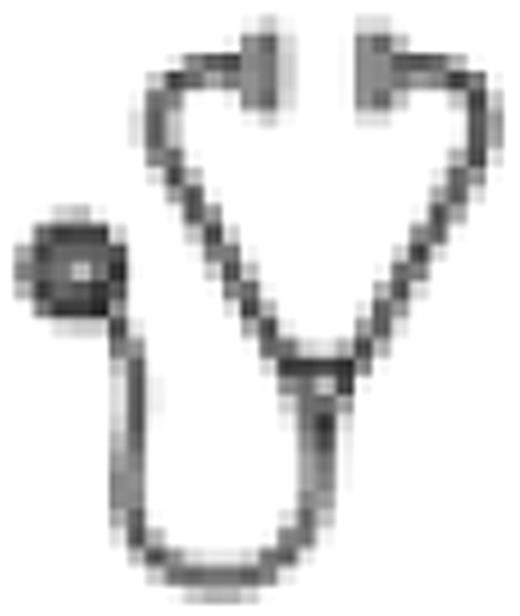Abstract
Abstract 766
The challenge in treating children with Hodgkin lymphoma (HL) is to continue progress in its curability while diminishing the risk for toxic events that compromise quality of life and survival. This therapeutic Phase III trial for patients with intermediate risk HL was designed to meet these tandem goals.
Eligible patients had clinical stage I-IIA with bulk, I-IIAE, I-II B, IIIA-IVA with or without bulk. All patients initially received 2 cycles of doxorubicin, bleomycin, vincristine, etoposide, prednisone and cyclophosphamide (ABVE-PC), at which point a response evaluation was performed. Rapid early (RER) versus slow early responder (SER) status was defined by CT imaging. All SER patients were randomized at the end of 2 cycles to an additional two cycles of ABVE-PC vs. 2 cycles of dexamethasone, etoposide, cisplatin and cytarabine (DECA) followed by 2 additional cycles of ABVE-PC. All SER patients received 21 Gy involved field radiotherapy (IFRT) following completion of chemotherapy. RER patients received 2 additional cycles of ABVE-PC followed by response evaluation by both CT and functional imaging (Gallium scintigraphy or FDG-PET). RER with complete responder (CR) status (RER/CR) patients were randomized to involved field radiotherapy (IFRT) or no further therapy. RER/non-CR patients were non-randomly assigned to IFRT. Tables 1 shows patient characteristics.
Among 1712 eligible patients, the event-free survival (EFS) at 3 years was 85.6% (95% confidence interval [CI] 83.6 – 87.3%) for all patients, 87.1% (95% CI 84.9 – 89.0%) for RER patients vs. 77.8% (95% CI 72.0 – 82.5%) for SER patients (p=0.0001). Overall survival (OS) at 3 years was 98.2% (95% CI 97.3–98.8%) for all patients and differed between RER (98.7%) and SER patients (96.9%) (p=0.02). IFRT following 4 cycles of ABVE-PC did not appreciably improve outcome for RER/CR patients: 3-year EFS was 87.9% (95% CI 83.3–91.4%) for patients randomized to receive IFRT vs. 85.4% (95% CI 80.8–89.0%) for those randomized to no IFRT (p = 0.07). For SER patients randomized to DECA, 3-year EFS was 80.2% (95% CI 71.9–86.2%), and did not differ statistically from those who were randomized to no DECA, where the 3-year EFS was 75.6% (95% CI 67.1–82.2%).
We conducted a secondary analysis of the data based on the FDG-PET response after two cycles of ABVE-PC. Among RER/CR patients, the 3-year EFS for those who were FDG-PET negative at the end of two cycles (PET2-) did not differ between those randomized to IFRT and no further therapy (86.1% vs. 86.5%). Among RER/CR patients who were FDG-PET positive or equivocal at the end of two cycles (PET+), there was no significant, but a slightly larger difference in 3-year EFS (82.5% for IFRT and 79.6% for no IFRT). Among SER patients who were PET2-, those randomized to no DECA had slightly better 3-year EFS (89.3%) compared to those randomized to DECA (86.9%), although the differences were not statistically significant. Among SER PET2+ patients, 3-year EFS was 75.1% for those treated with DECA compared with 57.4% for those treated without DECA (p=.08).
Early response to chemotherapy is important in the optimization of subsequent treatment intensity in patients with HL. We have found that patients with RER followed by CR, particularly those who were PET2-, may not benefit from 21Gy IFRT. In addition, CT and PET both play an important role in defining response and titration of therapy. Augmentation with DECA did not improve the overall EFS for SER (which remained inferior to outcome for RER), but there was a trend toward improved outcome with DECA in SER patients who were PET2+. Alternative augmentation regimens may prove more effective than DECA; an ongoing COG trial is evaluating this hypothesis. Further analyses of the AHOD0031 cohort are being performed to assess the simultaneous contribution of disease and treatment factors to the role of early response to chemotherapy and subsequent titration of therapy with IFRT or additional chemotherapy.
Characteristics of the Cohort
| Male | 908 |
| Female | 804 |
| Mean Age (yrs) | 14.6 |
| Median Age (yrs) (Range) | 15.2 (1.9, 21.9) |
| IA bulk | 82 |
| IIA bulk | 614 |
| IAE, IIAE | 28 |
| IB | 16 |
| IIB | 363 |
| IIIA | 353 |
| IVA | 256 |
| RER | 1274 |
| RER/CR | 716 |
| RER/<CR | 524 |
| SER | 299 |
| Other | 139 |
| Male | 908 |
| Female | 804 |
| Mean Age (yrs) | 14.6 |
| Median Age (yrs) (Range) | 15.2 (1.9, 21.9) |
| IA bulk | 82 |
| IIA bulk | 614 |
| IAE, IIAE | 28 |
| IB | 16 |
| IIB | 363 |
| IIIA | 353 |
| IVA | 256 |
| RER | 1274 |
| RER/CR | 716 |
| RER/<CR | 524 |
| SER | 299 |
| Other | 139 |
No relevant conflicts of interest to declare.

This icon denotes an abstract that is clinically relevant.
Author notes
Asterisk with author names denotes non-ASH members.

This feature is available to Subscribers Only
Sign In or Create an Account Close Modal